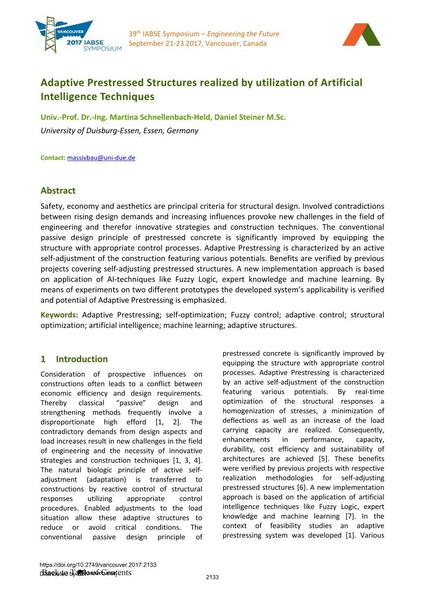Adaptive Prestressed Structures realized by utilization of Artificial Intelligence Techniques

|
|
|||||||||||
Bibliographic Details
| Author(s): |
Martina Schnellenbach-Held
(University of Duisburg-Essen, Essen, Germany)
Daniel Steiner (University of Duisburg-Essen, Essen, Germany) |
||||
|---|---|---|---|---|---|
| Medium: | conference paper | ||||
| Language(s): | English | ||||
| Conference: | IABSE Symposium: Engineering the Future, Vancouver, Canada, 21-23 September 2017 | ||||
| Published in: | IABSE Symposium Vancouver 2017 | ||||
|
|||||
| Page(s): | 2133-2140 | ||||
| Total no. of pages: | 8 | ||||
| Year: | 2017 | ||||
| DOI: | 10.2749/vancouver.2017.2133 | ||||
| Abstract: |
Safety, economy and aesthetics are principal criteria for structural design. Involved contradictions between rising design demands and increasing influences provoke new challenges in the field of engineering and therefor innovative strategies and construction techniques. The conventional passive design principle of prestressed concrete is significantly improved by equipping the structure with appropriate control processes. Adaptive Prestressing is characterized by an active self-adjustment of the construction featuring various potentials. Benefits are verified by previous projects covering self-adjusting prestressed structures. A new implementation approach is based on application of AI-techniques like Fuzzy Logic, expert knowledge and machine learning. By means of experiments on two different prototypes the developed system’s applicability is verified and potential of Adaptive Prestressing is emphasized. |
||||
| Keywords: |
structural optimization machine learning adaptive structures artificial intelligence adaptive prestressing self-optimization fuzzy control adaptive control
|
||||
